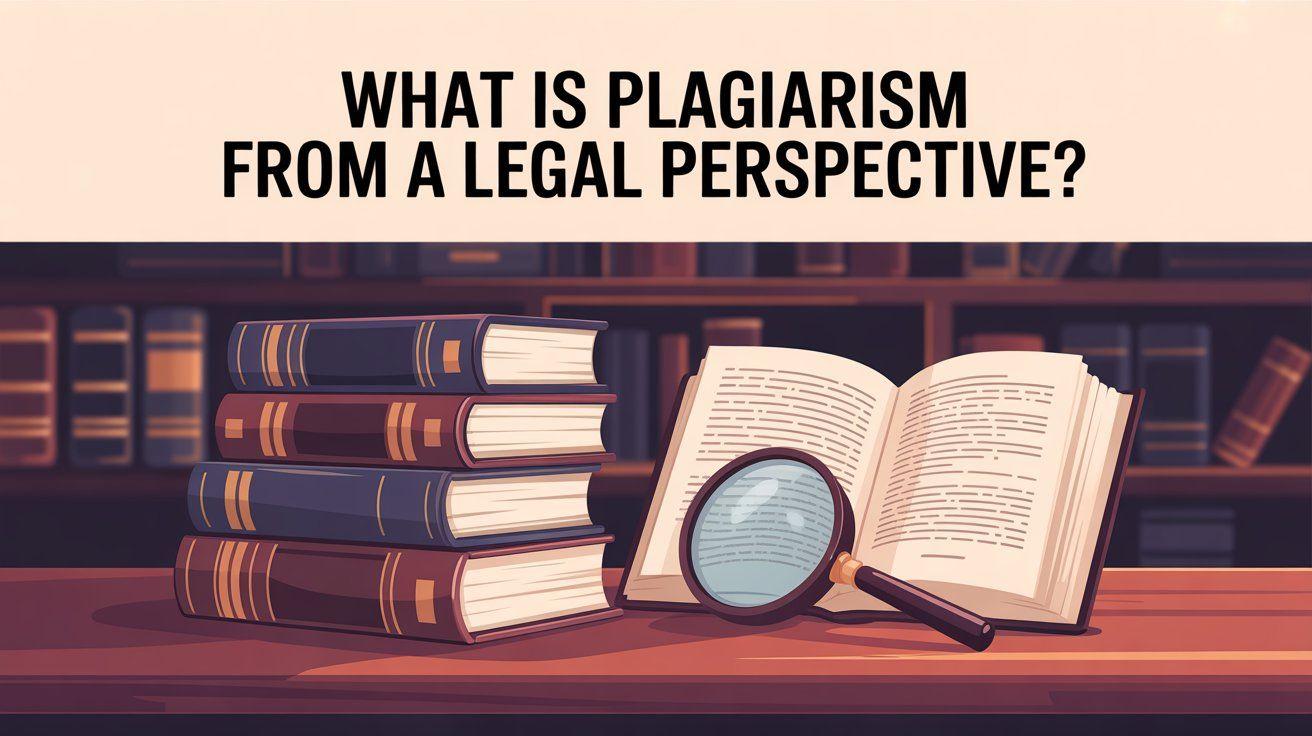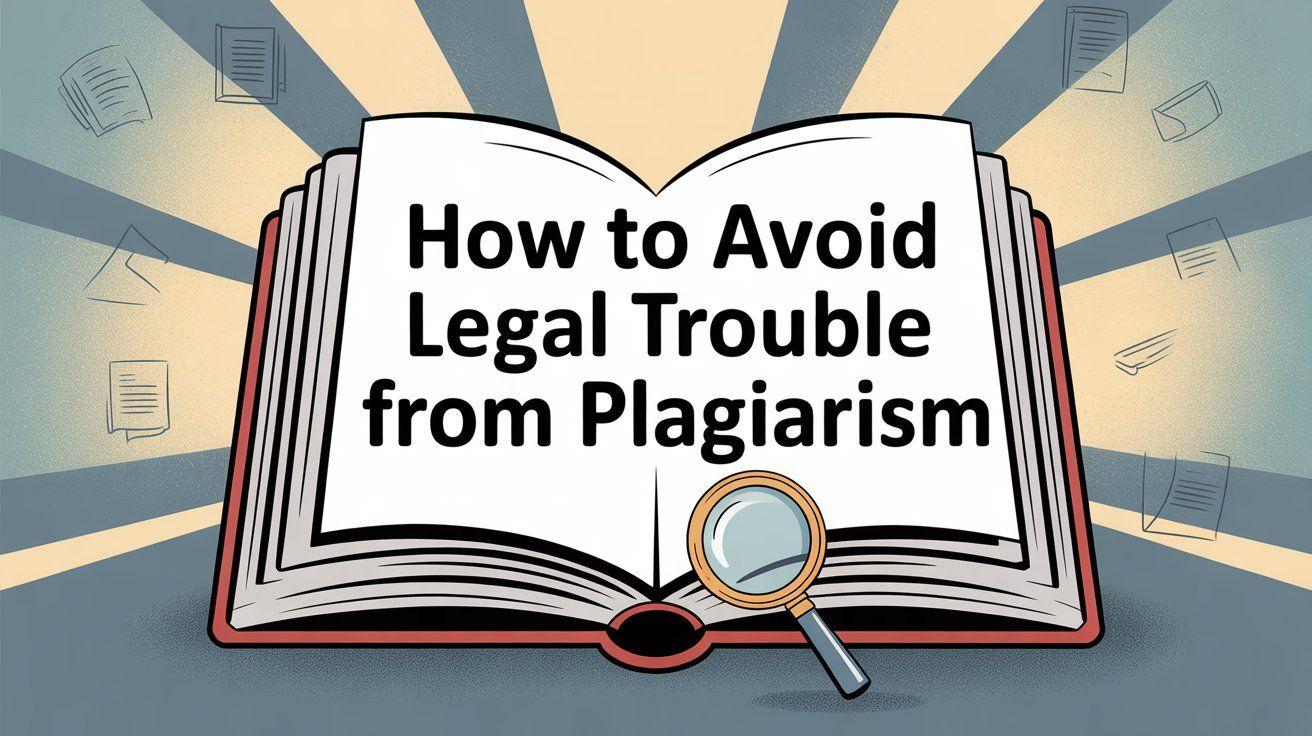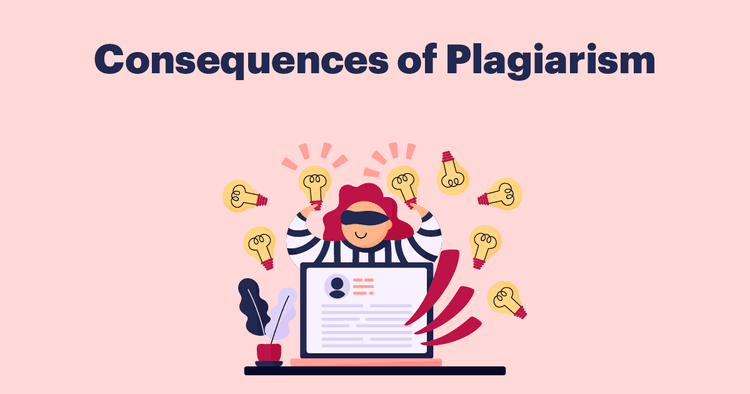The legal consequences of plagiarism extend far beyond academic penalties or workplace discipline. In our increasingly digital world, where content is easily tracked and intellectual property rights are fiercely protected, plagiarism can trigger serious legal action including federal lawsuits, substantial monetary damages, and permanent injunctive relief.
Whether you're a student working on a research paper, a professional creating content for your company, or a business owner developing marketing materials, understanding the legal implications of plagiarism is crucial for protecting yourself and your organization.
The intersection of plagiarism laws, copyright infringement statutes, and intellectual property rights creates a complex legal landscape that can trap the unwary.
ᴀᴅᴠᴇʀᴛɪsᴇᴍᴇɴᴛ
In this comprehensive guide, I’ll explain exactly when plagiarism crosses the line into actionable legal territory, what consequences you might face, and most importantly, how to protect yourself from these serious risks.
What is Plagiarism from a Legal Perspective?

Many people misunderstand the legal definition of plagiarism and how it differs from related legal concepts. Let’s clarify these important distinctions.
Legal Definition vs. Academic Definition
While academic institutions define plagiarism broadly as presenting someone else's work as your own, the legal system views plagiarism through the lens of existing intellectual property laws:
Copyright Infringement
This occurs when you reproduce, distribute, display, or create derivative works from copyrighted material without permission. This is the primary legal framework under which most plagiarism cases are prosecuted.
Trademark Violation
Trademark violations happen when plagiarized content includes protected brand names, logos, or distinctive business identifiers without authorization.
Breach of Contract
A breach of contract may occur when plagiarism violates specific agreements, such as employment contracts, publishing agreements, or academic honor codes.
When Plagiarism Becomes Legally Actionable
Not all plagiarism rises to the level of legal action. But some instances of plagiarism are unethical and can lead to legal action. For a plagiarism case to succeed in court, several elements must typically be present:
Copyrightable Material The plagiarized content must be eligible for copyright protection:
- Original creative expression (not just facts or ideas)
- Fixed in tangible form (written, recorded, or otherwise documented)
- Minimal creativity threshold (more than a simple list of basic facts)
Substantial Similarity The plagiarized work must be substantially similar to the original:
- Quantitative similarity: How much content was copied
- Qualitative similarity: Whether the "heart" or most important parts were taken
- Overall impression: Whether an ordinary observer would recognize the copying
Access and Copying The plaintiff must demonstrate:
- Access to the original work by the alleged plagiarist
- Actual copying occurred (not independent creation)
- Volitional conduct (intentional or negligent copying)
Economic Harm or Commercial Use Many successful plagiarism lawsuits involve:
- Commercial exploitation of the plagiarized content
- Economic damage to the original creator
- Market competition between the original and plagiarized works
Want real-world examples across academia, media, politics, and entertainment? See Famous Plagiarism Cases for landmark disputes and outcomes.
ᴀᴅᴠᴇʀᴛɪsᴇᴍᴇɴᴛ
Federal vs. State Law Implications
Copyright infringement cases typically fall under federal jurisdiction, which means:
- Federal court proceedings with potentially nationwide consequences Statutory damages ranging from $750 to $150,000 per work infringed
- Attorney's fees may be awarded to the prevailing party
- Injunctive relief to stop continued infringement
State laws may also apply in cases involving:
- Unfair competition claims
- Breach of fiduciary duty in employment contexts
- Misappropriation of trade secrets or confidential information
Types of Plagiarism That Can Lead to Legal Issues

There are different types of plagiarism can result in legal action. Understanding these categories helps identify high-risk behaviors.
Direct Copyright Infringement
Verbatim Copying The most straightforward cases involve copying substantial portions of protected works:
- Text plagiarism: Copying articles, books, reports, or other written content
- Image theft: Using photographs, illustrations, or graphics without permission
- Audio/video copying: Incorporating copyrighted music, speeches, or video content
Example: A marketing firm copied entire blog posts from a competitor's website for their client's content marketing campaign. The original publisher sued for copyright infringement, resulting in $75,000 in damages plus attorney's fees.
Derivative Work Violations
Unauthorized Adaptations Creating new works based heavily on existing copyrighted material:
- Paraphrasing without permission when the restructured content maintains substantial similarity
- Translating copyrighted works without authorization
- Creating summaries or compilations of protected content
Digital Age Plagiarism
Online content theft has created new categories of legally actionable plagiarism. Moreover, the widespread adoption of generative AI tools such as ChatGPT has led to people producing content at scale. Which can also lead to AI plagiarism. Content theft using technology can also be tings like:
- Website content scraping for SEO or marketing purposes
- Social media content copying including posts, images, and videos
- Software code plagiarism violating open-source licenses or proprietary rights
Metadata and attribution removal Removing or altering copyright notices, watermarks, or attribution information is particularly problematic legally because it demonstrates willful infringement.
Academic Plagiarism with Legal Consequence
While most academic plagiarism results in educational penalties, some cases cross into legal territory like published research fraud:
- Grant-funded research that involves plagiarism may trigger federal fraud investigations
- Medical or scientific publications with plagiarized content can lead to professional liability
- Dissertation or thesis plagiarism in published works may result in copyright claims
Commercial Academic Services
- Essay mills and plagiarism services face increasing legal scrutiny
- Students purchasing plagiarized content may face both academic and legal consequences
- Institutions may face liability for inadequate plagiarism prevention
ᴀᴅᴠᴇʀᴛɪsᴇᴍᴇɴᴛ
Legal Consequences of Plagiarism in Different Contexts
The legal ramifications of plagiarism vary significantly depending on the context in which it occurs. Let me break down the specific consequences in different environments.
Academic Context
When plagiarism involves federally funded research, the legal stakes escalate dramatically.
Research misconduct and other academic misconduct cases can involve investigation bodies like the Office of Research Integrity (ORI), National Science Foundation (NSF) and the Department of Education. Potential Consequences can include:
- Getting barred from federal funding for specified periods
- Institutional sanctions affecting entire research programs
- Criminal charges in cases involving fraud or false statements
Contractual Violations Academic plagiarism often violates specific legal agreements:
- Student enrollment contracts with academic integrity clauses
- Employment agreements for faculty and researchers
- Publishing contracts for academic journals and presses
Professional Licensing Issues For students in licensed professions, plagiarism can affect:
- Bar admission for law students
- Medical licensing for healthcare students
- Professional certification in various fields
Professional/Business Context
Workplace plagiarism creates multiple legal exposures:
- Violation of company policies regarding intellectual property
- Breach of employment agreements with ethics clauses
- Loss of trust and confidence necessary for continued employment
Vicarious liability companies may face legal action for employee plagiarism:
- Copyright infringement liability for employee actions within scope of employment
- Negligent supervision claims for inadequate oversight
- Contributory infringement for encouraging or facilitating plagiarism
Trade secret and confidentiality Issues Professional plagiarism often involves:
- Theft of proprietary information from competitors
- Violation of non-disclosure agreements with clients or partners
- Misappropriation of trade secrets for competitive advantage
For example, a software developer copied code from a previous employer's proprietary system. The former employer sued both the developer and the new company, resulting in a $2.3 million judgment and permanent injunction preventing use of the plagiarized code.
Publishing and Creative Works
The publishing industry sees frequent plagiarism litigation for, Monetary Damages, Actual damages and others.
Injunctive Relief Courts can order:
- Immediate cessation of publication or distribution
- Recall of published materials at the infringer's expense
- Destruction of infringing copies and production materials
Attorney's fees and costs In many copyright cases, prevailing parties can recover:
- Legal fees from the opposing party
- Court costs and litigation expenses
- Expert witness fees and other case-related costs
Digital Rights Management Online plagiarism faces additional legal tools:
- DMCA takedown notices for immediate content removal
- Platform liability for sites that don't respond to infringement notices
- ISP cooperation in identifying and stopping infringers
Facts: The agency systematically copied blog content from industry leaders for multiple clients' websites.
Legal Consequences:
- $250,000 in copyright damages from multiple plaintiffs
- Permanent injunction preventing use of the plagiarized content
- Business closure due to reputational damage and legal costs
Software Code Plagiarism Another significant case involved a startup that plagiarized open-source code:
Violation: Using GPL-licensed code in proprietary software without compliance Results:
- $1.2 million settlement to avoid prolonged litigation
- Complete software rewrite costing additional development time
- Investor withdrawal due to intellectual property concerns
Publishing Industry Cases
Book Plagiarism Lawsuits Publishing plagiarism cases often result in substantial damages:
Notable Example: A bestselling author faced claims for plagiarizing historical research:
- $2 million settlement to avoid trial
- Book recall from retailers nationwide
- Publishing contract termination affecting future earning potential
Online Content Aggregation I've represented publishers against content aggregation sites:
- Mass copyright infringement affecting hundreds of articles
- Statutory damages totaling over $1 million
- Injunctive relief shutting down the offending website
Entertainment Industry Cases
Music Plagiarism High-profile music plagiarism cases demonstrate the financial stakes:
- "Blurred Lines" case: $7.4 million judgment for copying Marvin Gaye
- "Stairway to Heaven" case: Years of litigation over musical similarities
- Sampling violations: Substantial damages for unauthorized use of copyrighted recordings
For more landmark examples and outcomes, see The 10 Most Famous Plagiarized Songs in Music History.
ᴀᴅᴠᴇʀᴛɪsᴇᴍᴇɴᴛ
How to Avoid Legal Trouble from Plagiarism

Here are some effective strategies to stay from the legal consequences of plagiarism and avoiding plagiarism altogether:
Establish Strong Policies and Procedures
Written Intellectual Property Policies Organizations should implement comprehensive policies addressing the use of external content:
- Clear approval processes for using third-party materials
- Documentation requirements for all content sources
- Regular training on copyright and fair use principles
Employee Guidelines:
- Explicit plagiarism prohibitions in employment agreements
- Reporting procedures for suspected violations
- Disciplinary measures for policy violations
Academic Integrity Standards Educational institutions and students should:
- Understand institution-specific policies on academic misconduct
- Implement honor codes with clear consequences
- Provide education on proper citation and attribution
Due Diligence and Documentation
Source verification Before using any external content:
- Identify copyright ownership through registration databases
- Determine copyright status (protected, public domain, Creative Commons)
- Obtain necessary permissions through licensing agreements
- Identify copyright ownership through registration databases
- Determine copyright status (protected, public domain, Creative Commons)
- Obtain necessary permissions through licensing agreements
Attribution and Citation Proper attribution can prevent many legal issues:
- Complete source information for all referenced materials
- Consistent citation formats appropriate to your field
- Clear distinction between your work and others' contributions
Legal Compliance Strategies
Evaluate the following when considering fair usage:
- Purpose and character of your use (commercial vs. educational)
- Nature of the copyrighted work (factual vs. creative)
- Amount and substantiality of the portion used
- Effect on the market for the original work
Professional legal consultation seek legal advice when:
- Substantial commercial use of external content is planned
- Legal notices or complaints are received
- Complex fair use questions arise in your work
Insurance considerations consider intellectual property insurance coverage:
- Errors and omissions insurance for professional services
- Media liability coverage for publishers and content creators
- Cyber liability policies covering online content issues
Tools and Best Practices for Ensuring Originality
Technology and systematic approaches can help prevent the legal consequences of plagiarism by ensuring content originality from the start.
Plagiarism Detection Technology
Comprehensive use of professional plagiarism checking tools can help for high-stakes situations. Consider:
- Legal-grade plagiarism analysis from specialized firms
- Expert witness services for litigation support
- Comprehensive IP clearance services for major projects
Content Creation Best Practices
Original content development should be the primary focus. There are different steps you can take for that:
- Research and Synthesis: Original research rather than relying on existing sources.
- Original commentary: Add value to new research or existing data by adding original commentary, your thoughts and more.
- Regular progress documentation: Make sure everyone is aligned with your organization's policies.
ᴀᴅᴠᴇʀᴛɪsᴇᴍᴇɴᴛ
Conclusion
Copyright infringement is the primary legal framework for plagiarism cases. Commercial use significantly increases legal risk. Moreover, the digital age has made both plagiarism detection and enforcement more sophisticated than ever before.
What might have gone unnoticed in the past can now trigger federal lawsuits with devastating consequences. However, this same technology makes it easier than ever to verify originality and maintain proper attribution.
Remember that intellectual property rights serve important purposes in our society—they protect creators' investments in original work and encourage continued innovation and creativity. By respecting these rights and maintaining high standards of originality, you're not just avoiding legal trouble; you're contributing to a culture that values and rewards genuine creativity and scholarship.
The time and effort invested in proper research, attribution, and originality verification is minimal compared to the potential legal consequences of plagiarism. Make integrity your standard operating procedure, and you'll never have to worry about facing the severe legal penalties that plagiarism can bring.







